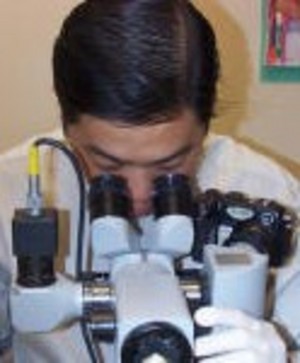Having an abnormal pap smear can be a very scary experience. Once your own pap smear comes back abnormal, you will need to next make an appointment to have a colposcopy. Like many, chances are that you probably do not know what to expect during this procedure, considering you may have never even heard of a colposcopy before. Here, I will share with you some of the things that you may want to know about having a colposcopy procedure, as well as some of the things that you should be expecting during this type of procedure.
What is a Colposcope?
A colposcope is a machine that is used during the colposcopy. It works the same way that a microscope does, and some people believe that it even looks a lot like a microscope. It is used to magnify the appearance of the vagina, cervix and vulva. There are several different types of powers which need to be used on certain areas or to detect certain things, all of which your doctor will be well aware of.
What Exactly Happens During a Colposcopy?
One of the main things that you may be wondering is what exactly happens during a colposcopy. First, you can expect your doctor to ask you some medical-related questions. Some of these will include how sexually active you are, if you have ever had an abnormal pap smear before, and whether or not you use protection during sexual intercourse.
Once your doctor has asked these questions, you will then be asked to lay down on your back with your legs in stirrups and your buttocks close to the bottom of the table. Your doctor will then use a colposcope to examine the vulva. Once your doctor has examined this area, he or she will place a speculum in the vagina.
An acetic and vinegar solution is applied to the cervix for the procedure. Areas on the cervix which could be pre-cancerous will turn white after this solution is applied to them. In some cases, your doctor may also apply an iodine solution, which will show if there are any areas of abnormality.
If your doctor should do any biopsies, he or she may use a endocervical curettage to scrape the cervical canal. Lastly, if you have had a biopsy, you can expect your doctor to apply a solution which help stop the bleeding. Your body will naturally dispose itself of this solution, which will be dark brown to black in color if you have experienced bleeding. Naturally, the solution is a yellow color. The disposing of this solution can happen up to several days after you have gone for your colposcopy.
What is a Colposcopy Checking For?
The sole purpose of a colposcopy is to check for pre-cancerous or cancerous lesions on the cervix, or cervical cancer. If your doctor notices that there are any pieces of tissue which turn white after the acetic and vinegar solution has been applied, he or she will be likely to do a biopsy on these areas.
Should You Expect Any Pain From a Colposcopy?
When you search on the internet, you will be likely to read horror stories about the colposcopy process. The level of pain which you will experience is often very low to mild. The doctor’s office will be likely to give you Ibuprofen before the procedure, so that you will not feel very much pain. The entire process is not painful, though you may experience some slight discomfort.
You will not be likely to experience any severe pain during this type of biopsy, though you will probably experience a mild pain. If you need to have a lot of biopsies taken, your doctor will be likely to use a topical anesthetic to reduce the amount of discomfort which you will feel later on. Most women do experience some level of mild pain when the endocervical curettage is used. However, many only report that they feel slight discomfort during this step.
Though the idea of a colposcopy may not sound very pleasant to you, it is important to keep in mind that it is a small price to pay if you do have cervical cancer. One of the main keys to successfully treating cervical cancer is an early diagnosis. Finding out as soon as possible that you could have cervical cancer is a main key to successfully treating any pre-cancerous or cancerous changes which can be found in your cervix.



